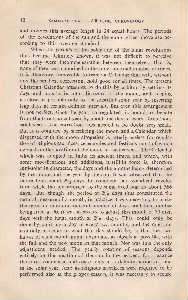Page 659 - Lokmanya Tilak Samagra (khand 2)
P. 659
12 SAMAGRA TILAK -- 2 • VEDIC CHRONOLOGY
and divides this average length in 24 equal hours. The periods
of the revolutions of the sun and the moon given above are ac-
cording to this average standard.
When the periods of the solar and of the lunar revolutions
thus became definitely known, it was not difficult to perceive
that they were incommensurable between themselves; that is,
none of them was contained in the other an exact number of times.
It is, therefore, impossible to frame a Calendar that will, without
any the smallest correction, hold good for all times. The present
Christian Calendar attempts to do this by arbitrarily settling its
days and months in total disregard of the moon, and keeping
as close as possible only to the solstitial solar year by inserting
leap days at certain definite intervals. But even this arrangement
is not perfect, since the year, so regulated, is bound to deviate
from the true tropical year by about one day in every three thou,.-
\_
sand years. The correction thus needed is no doubt very small.
But it is obtained by sacrificing the moon and a Calendar which
dispensed with the moon altogether is utterly useless for regula-
tion of religious sacrifices, ceremonies and festivals most of which
depend on the position of the moon in the heavens. The Calendar
which was adopted in India in ancient times, and which, with
some modifications and additions, is still in force is, therefore
luni-solar in character, the days and the months being determined
by the moon and the year by the sun. It was observed that the
moon took about 291 days to complete her synodical revolu-
tion, while the sun returned to the same fixed star in about 366
days. But though the period of 29~ days thus constituted the
natural measure of a month, in practice it was necessary to make
the month contain an integral number of days; and this number
being fixed at 30, it was necessary to adjust this month of 30 civil
days with the lunar month of 29~ days. This could only be
done by omitting a day in every two months, and the question
naturally arose as to what that day should be, so that the two
halves of each month might terminate, as closely as possible, with
the full and the new moon in that month. Nor was this the only
adjustment needed. The yearly rotation of seasons depends
entirely on the position of the sun in the heaven, for instance
the rains commence and cease, only at a definite period of time
in the solar year. And as religious sacrifices were required to be
performed also at the proper season, it was necessary to secure

